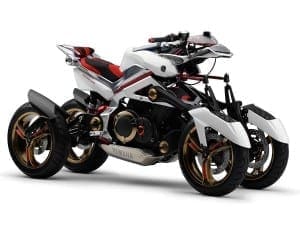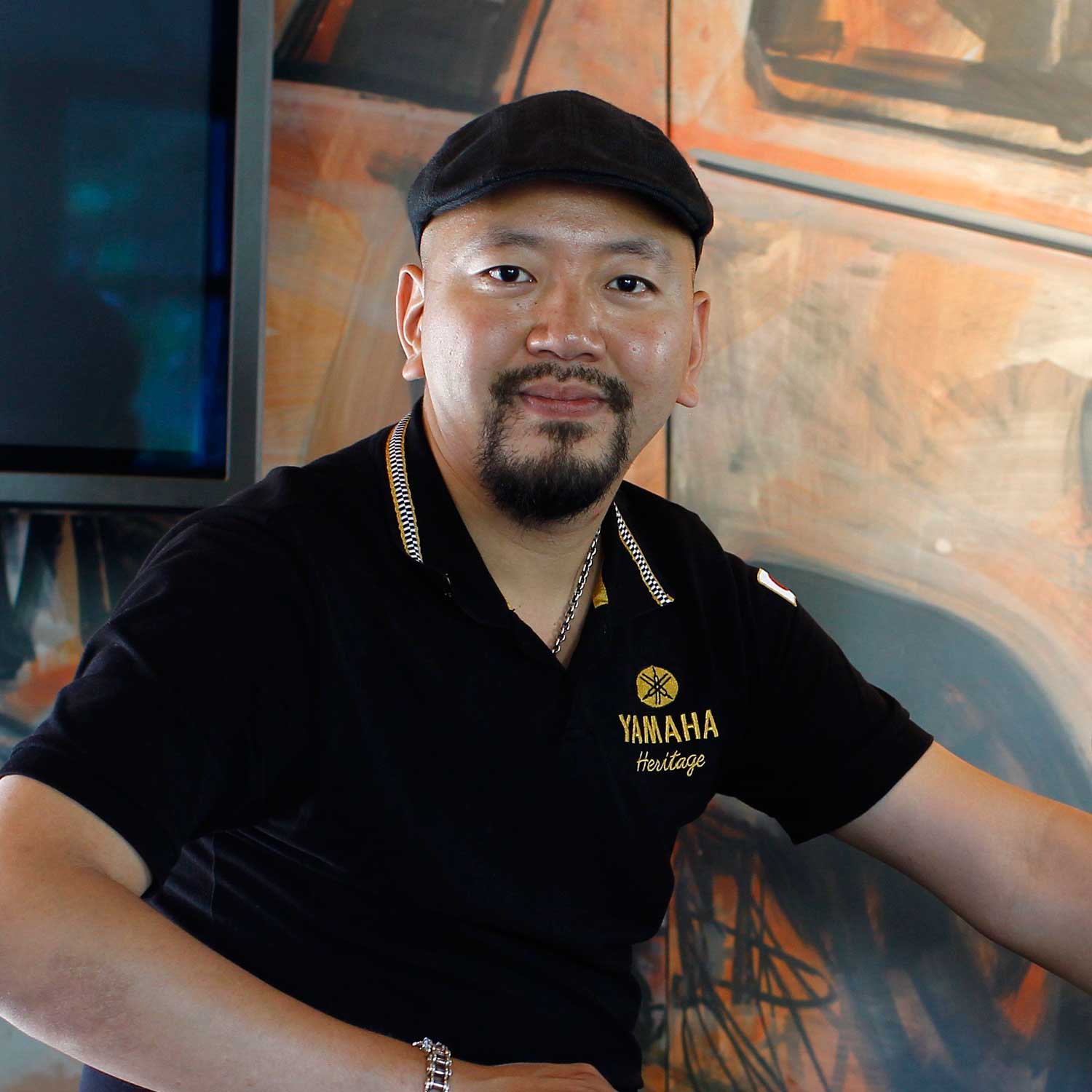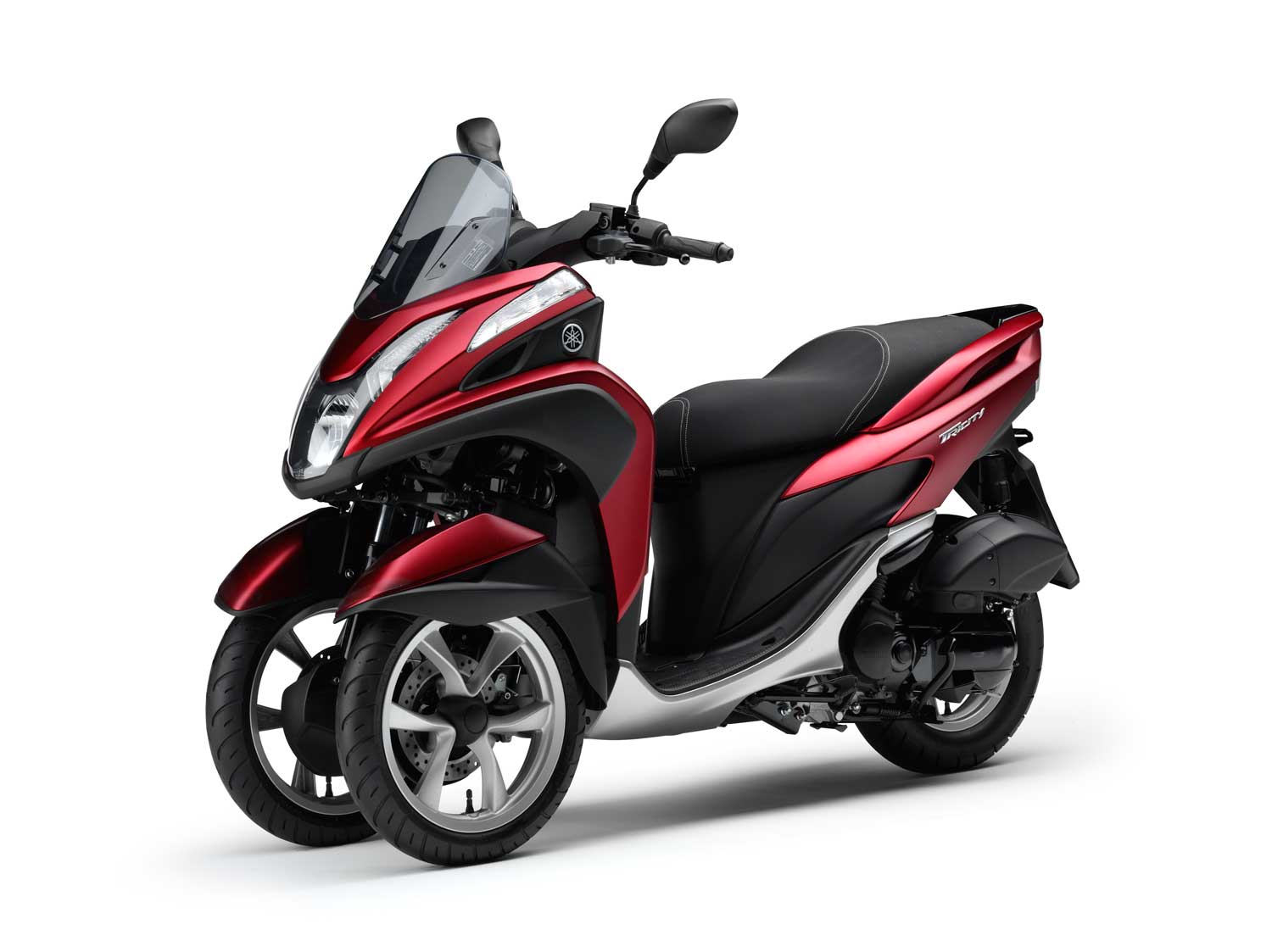Motor Cycle Monthly’s Carli Ann Smith spoke exclusively to Shun Miyazawa, Product Manager of the new Tricity…
What does your role involve?
“My job is to help transfer the customers requirements and needs to the engineer,s and monitor what’s coming back to make sure it fills the gap that’s been identified. We’ve got dedicated teams so that we can develop expertise. I work across all the teams and help to try and transfer some learnings from one team to another and introduce new ways, looking at things or applying solutions. Some technology from motorcycle development has been used on the Tricity such as the 50:50 weight distribution for stability.”
What was the idea behind the Tricity?
 “We realised that within the industry there wasn’t a new revolution, it was always about two wheels and there was too much emphasis on design and concept. We wanted to do something new. We developed the ‘Tesseract’ [a hybrid electric concept vehicle unveiled by the Yamaha Motorcycle Company at the 2007 Tokyo Motorcycle Show] and chose three wheels because they are popular in Europe. We wanted a scooter that had low running costs and low initial investment for customers.”
“We realised that within the industry there wasn’t a new revolution, it was always about two wheels and there was too much emphasis on design and concept. We wanted to do something new. We developed the ‘Tesseract’ [a hybrid electric concept vehicle unveiled by the Yamaha Motorcycle Company at the 2007 Tokyo Motorcycle Show] and chose three wheels because they are popular in Europe. We wanted a scooter that had low running costs and low initial investment for customers.”
What’s the plan of action?
“This is just the first trial of the new mobility concept for us – not just one shot – we have a clear plan ahead of the next five to six years. We’re aiming to capture a new group of safety conscious customers – who are looking for something new.”
How do you decide which characteristics to focus on for a new machine?
“We base our machines on a triangle – with fuel economy at one corner, passion and bike character at the other and design completing the three. All of our machines must contain these elements, but depending on the custom profile, we will adjust how much emphasis is put on each one – a machine must always have everything though.”
What would you say was the unique selling point of the scooter?
“It’s the stability. We want to help customers ride and feel confident in the front end. We didn’t want to lose the two wheeled benefits though and we worked hard to keep the dimensions the same as a normal 125cc machine.”
How long did the development take?
“It actually took four years, which is longer than our usual 2 ½ to 3 ½ year timeframe, however we saw rapid growth in the Asian market so we decided to adapt the scooter so that it suited the different usage, road surfaces and rider posture and size.”
How do you expect the scooter to sell in the UK?
“We have high expectations in the UK. We did a survey of 800 commuters in London and there was a healthy interest. They are not happy on public transport or about getting stuck in traffic – we think this is the solution. The small capacity allows A1 licence holders to ride it, and in some EU areas you can ride it on a car licence – we wanted to make sure that the entry barriers to riding it were low. We want people to share this scooter between the family – let the young members gain confidence on it and they could then get something bigger and sportier as they get older.”
Would you think about doing larger capacity versions?
“We would have no difficulty making larger capacity 3-wheeled scooters – we’re going to listen to our customers and see what they want next. We plan to do another survey in around six months to ask them what they want – whether it’s a centre panel, sportier engine characteristics or larger capacity.”
Click here to read the full review of the new Tricity




